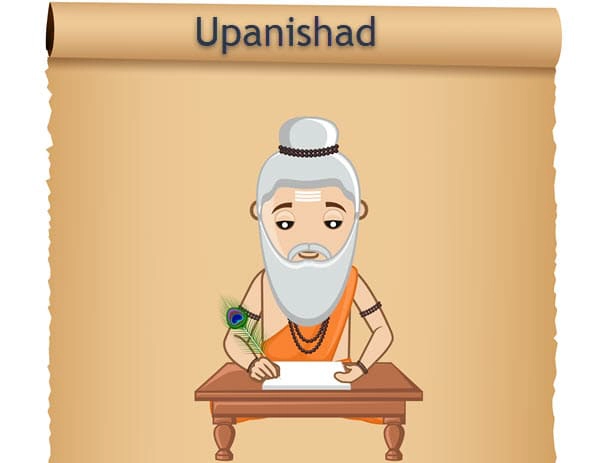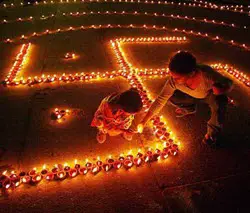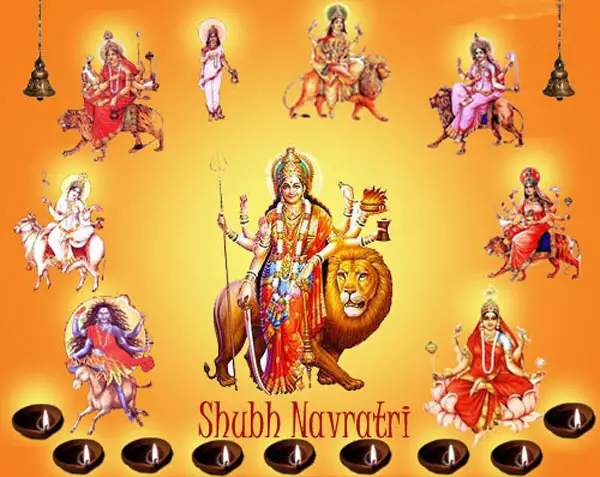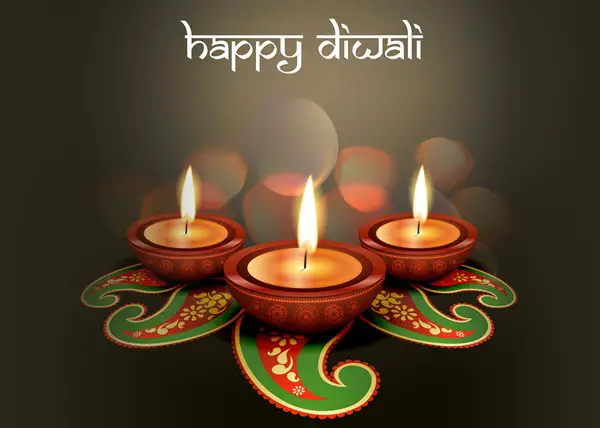The Upanishads are one of the most important religious and philosophical texts of the Hindus. They were written somewhere between 1500 BCE and 1000 BCE during such times when the Indian society started to raise their doubts about the traditional Vedic practices. The post offers you a detailed and insightful summary of the Upanishads.
The Upanishads were composed and compiled by such people that engaged themselves in spiritual progress. They choose to follow ascetic life and rejected ordinary material concerns. They even gave up family life. Moreover, the Upanishads focused on internal spiritual quests rather than external religious rites and sacrifices.
In fact, the name Upanishad is made up of two terms such as “upa” (near) and “shad” (to sit) meaning to “sit down near an enlightened master.” So, Upanishads signify the action of sitting at the feet of an enlightened or illuminated master (teacher) for spiritual instructions and discussions.
These books contain the insights and thoughts of Hindu spiritual figures. Moreover, each Upanishad is complete in itself. There is no consistent philosophy preached in these books. Rather these books contain the opinions and experiences of different spiritual masters.
Table of Contents
What Upanishads contain and what is written in Upanishads?
As of now, there are over 200 surviving Upanishads. However, only 14 of these are considered to be the most important. The following are the most important Upanishads: Isa, Prasna, Kena, Mundaka, Taittiriya, Aitareya, Brihadaranyaka, Katha, Svetasvatara, Mandukya, Chandogya, Kausitaki, Maitri, and Mahanarayana.
These texts cover some of the most important topics in Indian philosophy. In fact, most of the major philosophical themes have been covered in their pages. The most important aspect of these texts is that they try to integrate most of the opposing views with respect to philosophical and spiritual matters.
They serve as a means of inspiration for all those who want to take up the spiritual journey. The Upanishads emphasize that human intellect is not an adequate tool for understanding the immense complexity of reality. It cannot unlock the great mysteries of life and know the infinite, the eternal. It points out that the highest understanding comes from direct perception as well as intuition.
In the Upanishads, there is no single comprehensive system of thought. However, they do develop some basic general principles such as Samsara, Karma, Dharma, and Moksha. These metaphysical schemes have been shared by most Indian philosophers and religions.
For example, the concept of Samsara states that the soul follows the process of reincarnation wherein when a person dies, the soul will be reborn again taking another body. So, there is a regular cycle of deaths and resurrections.
The concept of Karma emphasizes on “actions” and states that all actions have consequences. It can be good or bad. Karma is the basis which determines the conditions of next life. So, our life gets conditioned by our previous Karma. This is a universal and eternal law with no judgment or forgiveness. It means that those who do good actions will get reborn in better conditions while those who do bad actions will be reborn in worse conditions.
The concept of “Dharma” emphasizes on right behavior or duty. It states that we all have a social obligation. Each specific caste in society has a particular set of responsibilities, which is known as its Dharma. Moreover, Dharma encourages people to perform their duties in the best possible way. For instance, for the Kshatriyas, the highest honor is to die on the battlefield.
The concept of “Moksha” emphasizes on liberation or release from the cycle of birth and death. The Upanishads states that the continuous cycle of deaths and resurrection is a pointless repetition with no ultimate goal attached to it. It further states that permanent peace and freedom is not possible with this continuous cycle of birth and death.
It is only Moksha that can free you from this never-ending the cycle of birth and death. Moksha is the route to escape from this repetition. The Upanishads also points to what happens to the soul that gets released from samsara or attains Moksha. It introduces the concept of Atman and Brahman.
The Upanishad brings out the essence of the Hindu philosophy in the sense that it states that the core of our own self is neither the body nor the mind, but the “Atman” or the “Self.” It further points out that the core of all creatures is the Atman itself, and it can be experienced through meditation. When we experience the Atman, we come to the deepest level of our existence.
According to the Upanishads, the “Brahman” is the underlying substance of the Universe. It is the unchanging “Absolute Being.” It is the intangible essence of the whole existence that creates and sustains everything. The Brahman is beyond all description and intellectual understanding. When a person attains moksha or liberation, the atman returns to Brahman, like a drop of water returns to the ocean.
The Upanishads even talks about the ways to achieve moksha. There are many ways to achieving moksha, such as meditation and introspection. It points out that we are all part of the whole. The goal is to achieve identification with Brahman. For instance, in the Chandogya Upanishad, Uddalaka comments on the Brahman while talking to his son Shvetaketu:
There is nothing that does not come from him,
Of everything, he is the innermost Self.
He is the truth; He is the Self Supreme.
Later on, these metaphysical schemes (Samsara, Karma, Dharma, and Moksha) were shared by most Indian religions, including Hinduism, Jainism, and Buddhism.
On the whole Upanishads’ message is Universal and has played an important role in shaping the Indian culture.
Who wrote the Upanishads?
The authors of most of the Upanishads are unknown and uncertain. Nobody knows the names of the authors of the Upanishads. In fact, the ancient Upanishads have been embedded in the Vedas, which are the oldest Hindu religious scriptures. Moreover, the Vedic texts are regarded as “Apauruseya” meaning “not of a man but Superhuman.” So, they are impersonal and authorless. In short, Upanishads were skillfully created by Rishis (sages) for the benefit of humankind.
We must point out that some of the philosophical theories mentioned in the Upanishads have been credited to famous sages such as Yajnavalkya, Uddalaka Aruni, Balaki, Pippalada, Shandilya, Shvetaketu, and Sanatkumara. There are even some women sages who participate in the dialogues in the early Upanishads. These are Maitreyi and Gargi.
Apart from this, there are some exceptions to the otherwise anonymous tradition of the Upanishads. For example, the Svetasvatara Upanishad gives closing credits to the Sage Shvetashvatara and is regarded as the author of the Upanishad. Moreover, many scholars are of the opinion that the early Upanishads were interpolated as well as expanded over time. That said, most of the Upanishads are the work of many different Rishis (sages).
How many Upanishads are there, and what are they?
There are over 200 known Upanishads. These Upanishads have been associated with Shaktism (Goddess Shakti), Shaivism (Lord Shiva), Vaishnavism, Sannyas, Yoga, and Samanya-Vedanta.
The Brihadaranyaka and the Chandogya Upanishad are the oldest.
Upanishads such as Aitareya, Kauṣītaki, and Taittiriya may be dated to the mid 1st millennium BCE. Some Upanishads such as Katha, Mundaka, and Prasna have Buddhist influence and can be placed after the 5th century BCE. These are known as the Principal Upanishads.
Other than the Principal Upanishads, there are even new Upanishads such as Kena, Mandukya, and Isa Upanishads.
What is the difference between Veda and Upanishad?
Vedas and Upanishads are often regarded as the one and the same thing. However, Upanishads are parts of Vedas. A Veda is divided into four parts, such as – Samhita, Brahmana, Aranyaka, and Upanishad. So, Upanishad is the last part of a given Veda. As Upanishad is the end of a Veda, it is often called as the Vedanta.
Upanishad is mainly philosophical in nature. It talks of the greatness of the Brahman, the nature of the Atman, the Supreme Soul, and about life after death. So, Upanishad is also known as the Jnana Kanda of the Veda. Upanishad speaks of the highest knowledge.
What is the real meaning of Upanishad?
Upanishad is one of the central religious texts of the Hindus that have been recorded from oral traditions. They contain philosophical principles and concepts of Hinduism. They mainly center on karma, Brahman, atman, and moksha.
Upanishad emphasize on self-realization through yoga and meditation practices. They also put forward ideas such as non-violence, compassion, self-restraint, as well as charity. In fact, Upanishad means “sitting down near the feet of the master (spiritual guru).”
Which is the oldest Upanishad?
The Brihadaranyaka Upanishad is known as the oldest Upanishad it is one of the Principal Upanishads.
What are the 10 Upanishads?
There are over 200 Upanishads. However, the traditional number is 108. Of these, only 10 are regarded as the Principal Upanishads. These are:
- Isha
- Prashan
- Katha
- Kena
- Mandukya
- Mundaka
- Aitareya
- Taittiriya
- Brihadaranyaka
- Chhandogya
Upanishads Quotes
Brahman is Reality, Knowledge, and Infinity.
(Taittiriya Upanishad 2.1.3)
Brahman is Consciousness.
(Aitareya Upanishad 3.1.13)
All this that we see in the world is Brahman.
(Chhandogya Upanishad 3.14.1)
Brahman is bliss (Ananda)
(Taittiriya Upanishad 3.6.1)
Aum. Asato ma sad-Gamaya; tamaso ma Jyotirgamaya; Mrityor-ma amrutam Gamaya. Aum. Shanti, Shanti Shanti.
Brihadaranyaka Upanishad (1.3.28)
Well, that’s all we have for you in this post on Upanishads. Thanks for visiting. We hope that the post proves useful to you.
Please share the post across popular social network channels. We welcome your comments and suggestions.





